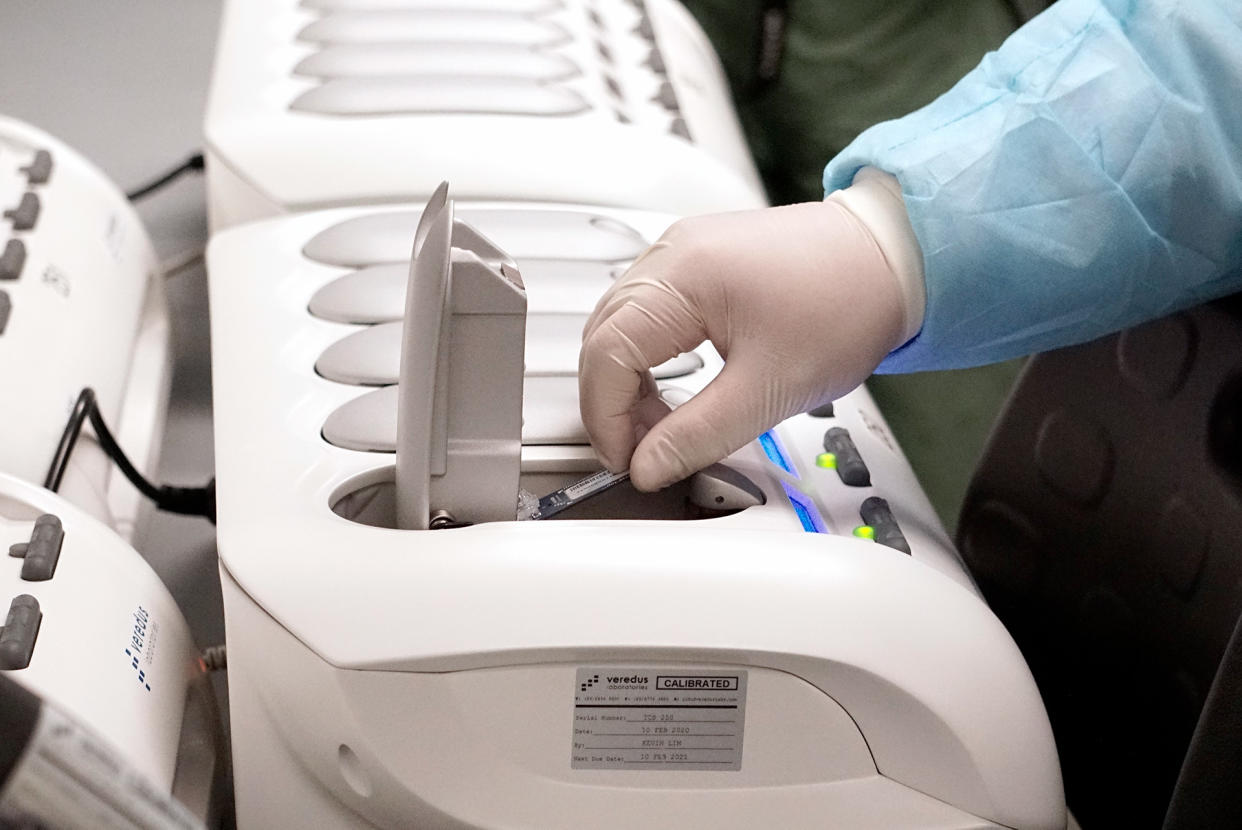COVID-19: Singapore to expand testing capacity, 'strategically' deploy resources

SINGAPORE — Singapore will continue to expand its COVID-19 testing capacity and to “strategically” deploy its resources to yield the greatest impact while combating the coronavirus outbreak, said Health Minister Gan Kim Yong on Monday (4 May).
To date, the country has conducted 140,000 tests for the coronavirus, or 2,5000 tests per hundred thousand people. “This is among the highest testing rates in the world,” said Gan, while delivering his Ministerial Statement in Parliament.
Responding to questions and suggestions from Members of Parliament (MPs) on the different types of tests and their uses, Gan said that the main type used are the polymerase chain reaction (PCR) tests. These work by detecting the virus’ RNA from a nose or throat swab and is the “gold standard” for detecting infections, he added.
PCR testing is used for three key purposes: to diagnose suspect cases and isolate close contacts; for screening and active case finding of individuals at risk of infection, such as migrant workers who have been temporarily transferred out from their dormitories; and to conduct surveillance to monitor undetected cases in the community.
“Currently, we have the capacity to conduct more than 8,000 PCR tests a day in total across our community and migrant workers in dormitories, up from 2,900 a day in early April,” said Gan. The authorities are working with private and public sector partners to increase the testing capacity to 40,000 a day, he added.
“With this increase, we will widen the net that we cast for diagnostic testing for symptomatic cases, active case finding, screening and surveillance testing in our community and among workers, including migrant workers,” he said.
“We will also do more testing and monitoring to pick out asymptomatic and pre-symptomatic cases among priority groups such as nursing home residents and staff, to prevent clusters from developing.”
Serology testing
With regard to serology testing, which works by detecting in blood samples the antibodies produced by the body to fight against the virus, Gan said the effectiveness of such tests is “very low in the first 10 days of illness”. This is because it takes time for the immune system to develop antibodies.
“Therefore, unlike the PCR testing, serology tests are useful to indicate past infection but it cannot be used for early diagnosis because of the time lag. Many such tests in the market are also still under review and validation,” he said.
Still, the National Centre for Infectious Diseases (NCID) has begun to use such tests to study the level of infections among various groups. These include healthcare workers, close contacts of COVID-19 patients, and the general population.
In an NCID study published last week, it was found that among the almost 2,000 samples from healthcare worker volunteers and the general population, “none had antibodies pointing to a past infection”.
“This shows that the infection rate among our healthcare workers and general population is extremely low,” said Gan, adding that the study showed that among close contacts, around 2.5 per cent had antibodies “despite not having had symptoms during their quarantine”.
Asymptomatic testing
Gan said that the government would “study” the prospect of conducting asymptomatic testing for the entire population, although he noted that the “yield will be very low if asymptomatic testing is done indiscriminately”.
“It may also need to be done repeatedly as it does not reflect immunity and those tested can be infected after the test. It may not be best way to use testing resources,” he said.
Instead, the authorities have started conducting selective asymptomatic testing for priority groups. By example he cited how asymptomatic young children are currently tested if they are in the same household as COVID-19 patients, since they may not be able to articulate their symptoms well.
In looking to protect seniors, particularly nursing home residents, testing has begun for staff and residents at homes operated by the Ministry of Health (MOH) and Ministry of Social and Family Development (MSF) that have a high proportion of seniors.
“Such tests complement existing precautionary measures, such as good infection control practices and close monitoring for symptoms in staff and residents. They will allow us to intervene early where needed to protect the elderly residents,” said Gan.
He added that as more businesses open, more tests will also be conducted for essential service workers. Meanwhile, at Singapore’s borders, tests could also be deployed for arrivals to reduce the risk of local transmission from imported cases.
Stay in the know on-the-go: Join Yahoo Singapore's Telegram channel at http://t.me/YahooSingapore
Related stories:
About 40 instances of COVID-19 'fake news' debunked since January: S Iswaran
COVID-19: Migrant workers were on MOM's radar since January – Josephine Teo
Nearly 300 rough sleepers have sought help during circuit breaker period: MSF
COVID-19: Gan Kim Yong outlines 3 indicators for easing circuit breaker measures



